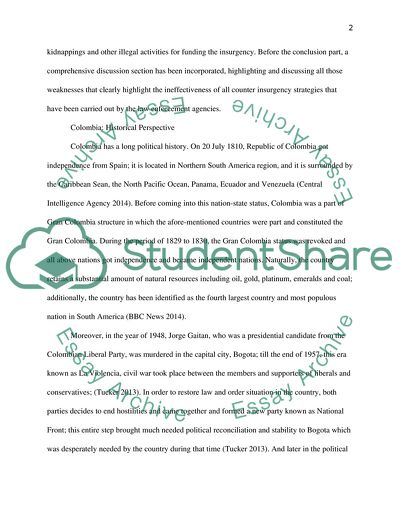Cite this document
(The Weaknesses of the Insurgency Strategy in Colombia Coursework Example | Topics and Well Written Essays - 3500 words, n.d.)
The Weaknesses of the Insurgency Strategy in Colombia Coursework Example | Topics and Well Written Essays - 3500 words. https://studentshare.org/social-science/1850697-what-are-the-weaknesses-of-the-insurgence-strategy-in-colombia-discuss
The Weaknesses of the Insurgency Strategy in Colombia Coursework Example | Topics and Well Written Essays - 3500 words. https://studentshare.org/social-science/1850697-what-are-the-weaknesses-of-the-insurgence-strategy-in-colombia-discuss
(The Weaknesses of the Insurgency Strategy in Colombia Coursework Example | Topics and Well Written Essays - 3500 Words)
The Weaknesses of the Insurgency Strategy in Colombia Coursework Example | Topics and Well Written Essays - 3500 Words. https://studentshare.org/social-science/1850697-what-are-the-weaknesses-of-the-insurgence-strategy-in-colombia-discuss.
The Weaknesses of the Insurgency Strategy in Colombia Coursework Example | Topics and Well Written Essays - 3500 Words. https://studentshare.org/social-science/1850697-what-are-the-weaknesses-of-the-insurgence-strategy-in-colombia-discuss.
“The Weaknesses of the Insurgency Strategy in Colombia Coursework Example | Topics and Well Written Essays - 3500 Words”. https://studentshare.org/social-science/1850697-what-are-the-weaknesses-of-the-insurgence-strategy-in-colombia-discuss.


